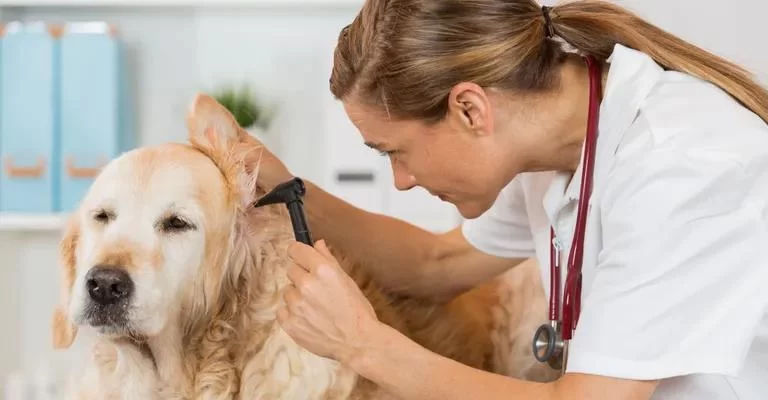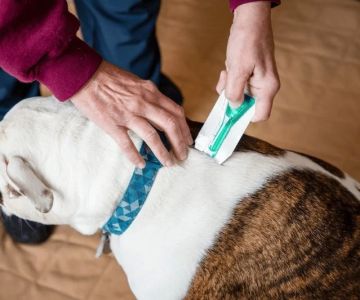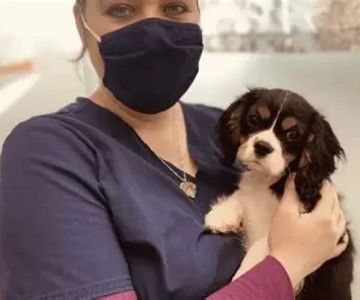Recognizing the Signs of Skin Infections in Pets
As a pet owner, I’ve often faced the challenge of figuring out when my furry friend isn’t feeling well. One area that seems to frequently get overlooked is skin health. Our pets can’t tell us when something is wrong with their skin, so it’s up to us to be vigilant and recognize the subtle signs that may indicate a skin infection. Over the years, I’ve learned a lot about skin infections in pets, and I want to share some of that knowledge with you, so you can help keep your pet healthy and happy.
What Are Skin Infections in Pets?
Skin infections are one of the most common health issues for pets. They can happen to both cats and dogs, and they can range from mild to severe. Essentially, a skin infection occurs when bacteria, fungi, or yeast invade the skin and cause irritation, inflammation, and even pus. What many people don’t realize is that these infections can happen anywhere on the body, often starting from something as simple as an itch, an insect bite, or even an allergy.
I’ve personally seen my dog start scratching excessively after a long walk through the grass, and I didn’t realize right away that it was the beginning of a skin infection. Sometimes it’s just a minor issue, but if left untreated, it can lead to more serious problems. That’s why it’s essential to understand how to spot the signs of skin infections in pets early on.
Common Signs of Skin Infections in Pets
Recognizing a skin infection in your pet can be tricky at first, especially since many pets have thick fur. However, with some patience and careful observation, it’s possible to identify a problem before it worsens. Here are the common signs I’ve encountered that indicate a potential skin infection:
1. Excessive Scratching or Licking
If your pet is constantly scratching or licking a particular spot on their body, this is often the first sign of an underlying issue. It’s easy to dismiss it as typical behavior, but when it becomes obsessive, it’s time to pay attention. Scratching or licking can be an indication that your pet is trying to soothe an itchy, irritated area that may be infected.
2. Red, Inflamed Skin
When a pet develops a skin infection, the area affected may become red, inflamed, or swollen. You might notice that the skin looks irritated or even raw. I remember when my dog’s belly became inflamed after he kept scratching an area. It’s not always easy to spot under their fur, but if you look closely, you might notice that the skin feels warm to the touch or has an unusual texture.
3. Hair Loss
Another clear sign of a skin infection is hair loss. This usually occurs around the infected area. My cat had a spot on her back that started to lose fur, and at first, I thought it was just shedding. However, as I took a closer look, the skin underneath was dry and flaky, which indicated that it was more than just a grooming issue.
4. Unpleasant Odor
Foul smells coming from your pet’s skin or fur are a major red flag. Infected areas often develop a strong, unpleasant odor due to the bacteria or yeast growing in the area. One of my own pets developed a foul smell from an infection between his toes, which I initially mistook for dirt. After consulting with a vet, I learned that the smell was caused by a bacterial infection.
5. Pus or Oozing from Wounds
If you notice any discharge from your pet’s skin, particularly pus, it’s important to take immediate action. The discharge is a sign of infection, and it can spread quickly if not addressed. When my dog had a small wound on his leg that started oozing, I realized it was infected and needed professional treatment right away to avoid complications.
What Causes Skin Infections in Pets?
Understanding the causes of skin infections is essential for preventing them in the first place. While skin infections can be caused by various factors, I’ve found that the most common causes are:
1. Allergies
Pets, just like people, can develop allergies to certain foods, environmental factors, or chemicals. My cat had a severe reaction to a specific brand of food, and it caused her skin to break out in itchy patches. These allergic reactions often lead to scratching, which increases the likelihood of developing an infection.
2. Fleas and Ticks
Fleas and ticks are not only a nuisance but also a significant cause of skin infections in pets. I’ve learned that even after treating my dog with flea medication, a few fleas can still cause itching and irritation that eventually lead to infections. Keeping your pet protected from these pests is crucial in preventing skin issues.
3. Poor Hygiene and Moisture
Pets that are not regularly bathed or have excessive moisture around their skin are at a higher risk for skin infections. If my dog gets wet and I don’t dry him properly, the moisture can get trapped in his fur, creating the perfect environment for bacteria or yeast to thrive. This can quickly lead to an infection, especially in the folds of the skin.
4. Underlying Health Conditions
Certain health conditions, such as diabetes or immune system disorders, can make pets more susceptible to skin infections. In some cases, skin infections can be the first sign of a larger health issue. I once had a pet with an undiagnosed thyroid issue, and skin infections became one of the symptoms that led to further investigation and treatment.
How to Treat Skin Infections in Pets
If you notice any of the signs of a skin infection in your pet, it’s important to take action quickly to prevent the condition from worsening. Over the years, I’ve found the following steps helpful in treating skin infections in pets:
1. Visit Your Veterinarian
The first and most crucial step is to visit a vet. A professional diagnosis is essential, as they can determine whether the infection is bacterial, fungal, or yeast-related. I’ve learned that only a veterinarian can prescribe the right treatment to effectively address the infection. This might include topical creams, oral antibiotics, or antifungal medications.
2. Keep the Area Clean and Dry
After visiting the vet, it’s important to keep the infected area clean and dry. Regular cleaning helps prevent the infection from spreading, and it’s something I do diligently with my pets. I use pet-safe wipes and shampoos to gently clean the affected area.
3. Follow the Vet’s Instructions
It’s crucial to follow the vet’s instructions regarding medications and treatments. My vet once prescribed a special ointment for a skin infection on my dog, and I made sure to apply it consistently as directed. Skipping doses or not following the treatment plan can lead to a longer recovery time.
4. Prevent Future Infections
Prevention is always better than cure. I’ve found that regular flea treatments, maintaining proper hygiene, and keeping my pets’ skin dry help minimize the risk of skin infections. Additionally, keeping an eye out for any early signs of irritation can help me catch potential issues before they escalate.












